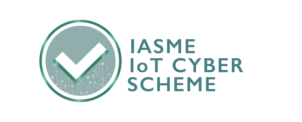Peter Hall
October 4 2023
Continuing with our guide on Cyber Essentials, today we’re looking at how you should prepare for your CE Assessment, from understanding your environment to running a gap analysis. From developing an action plan to team training and awareness.
If you’ve not read our earlier articles on What is Cyber Essentials, Getting Started, or The 5 Security Controls, we’d recommend taking a look at those first.
An essential step in demonstrating your commitment to security and protecting sensitive data is attaining Cyber Essentials certification as it validates your organisation’s compliance with industry standards and best practices. This article delves into the process of preparing for assessment, focusing on the key steps involved in this endeavour.
The first step in preparing for a Cyber Essentials assessment is to conduct a thorough internal assessment of your security posture. This self-assessment aims to identify gaps and weaknesses in your current security measures, allowing you to proactively address them before the Cyber Essentials assessment.
Understanding Your Environment: Begin by gaining a comprehensive understanding of your organisation’s IT environment, including networks, systems, applications, and data. This knowledge is crucial for identifying potential vulnerabilities.
Organisational Assets: Create an asset register, listing all hardware and software components within your network. This register helps in tracking and managing vulnerabilities effectively.
Risk Assessment: Evaluate the potential threats and risks your organisation faces. Consider internal and external threats, such as malware, insider threats, and cyberattacks, and prioritize them based on their potential impact. As a result of the risk assessment, you should construct an incident response and business continuity plan – this will help to minimise impact in the event of an attack. A great way to test your business continuity plan is to carry out Incident Response Scenario Testing.
Gap Analysis: Compare your existing security policies, procedures, and controls against industry standards and best practices, such as ISO 27001 or recommendations from the NCSC. This will help to identify any gaps and areas where your organisation falls short of compliance.
Addressing Vulnerabilities and Non-Compliant Areas
Once you’ve identified any gaps and vulnerabilities in your security posture, it’s imperative to address them immediately. Here’s how:
Prioritise Remediation: Prioritise the vulnerabilities and non-compliant areas based on their severity and potential impact on your organisation’s security. This will help you allocate resources effectively.
Develop an Action Plan: Create a detailed action plan that outlines the steps required to remediate each identified issue. Responsibilities may be assigned to specific individuals or teams to ensure the completion of all necessary tasks.
Documenting Policies and Procedures
Effective documentation of security policies and procedures is fundamental for ensuring consistency, clarity, and compliance within your organisation. Proper documentation helps in communicating how security controls are implemented and maintained. Here’s how to go about it:
Policy Creation: Develop security policies that outline your organisation’s approach to security. These policies should cover areas such as access control, data protection, incident response, and employee training.
Procedure Documentation: You should have detailed procedures that provide step-by-step instructions for implementing security controls and responding to security incidents. These must be easily accessible to all relevant personnel.
Training and Awareness: Employee training and awareness is one of the most valuable components of a comprehensive cybersecurity strategy. Training sessions should be conducted regularly to ensure that all employees are aware of and understand the security policies and procedures. Regular reviews to ensure documentation is up to date to reflect recent changes in technology and threats should be conducted.
Internal Audit and Testing
To verify the effectiveness of your security controls and the overall security of your organisation, internal audit and testing are essential components of your preparation for certification assessment. Here’s what you need to consider:
Vulnerability Scans: Regular internal vulnerability scans using specialized tools to identify weaknesses in your network, systems, and applications are key to catch vulnerabilities before they cause an issue. These scans should be conducted in a controlled and systematic manner.
Penetration Testing: Penetration testing, also known as ethical hacking, is used to simulate real-world cyberattacks and assess your organisation’s readiness to defend against them. Penetration tests help identify vulnerabilities that automated scans might miss.
Review Logs and Incident Data: Security logs and incident data should be regularly analysed to identify any suspicious activities or anomalies. Continuous monitoring will support timely detection and response to security incidents.
It is important to evaluate the effectiveness of your security controls in mitigating vulnerabilities and threats. If any controls are found to be ineffective, you should take immediate action to improve or replace them.
Remediation and Improvement
After conducting internal audit and testing, you will likely identify vulnerabilities and weaknesses that need to be addressed. Remediation and continuous improvement are key aspects of preparing for the Cyber Essentials assessment. Here’s how to approach them:
Addressing Vulnerabilities: Immediately address the vulnerabilities and weaknesses identified during testing and audit processes. Follow your action plan to remediate these issues and ensure that all responsible parties are aware of their roles and timelines.
Fine-Tuning Security Controls: Continuously fine-tune your security controls based on the insights gained from the internal audit and testing. This process involves optimising configurations, updating software, and enhancing policies and procedures.
Incident Response Plan: If any security incidents were detected during testing, review your incident response plan, and make necessary adjustments to improve its effectiveness. Ensure that your team is well-prepared to respond to security incidents swiftly and effectively.
Regular Review and Reporting: Establishing a regular review process to assess the effectiveness of your security measures is crucial – you can then create comprehensive reports that document and keep track of your organisation’s security posture, any actions taken, and areas for improvement.
By conducting a thorough self-assessment, addressing vulnerabilities, documenting policies and procedures, performing internal audit and testing, and continuously striving for remediation and improvement, you can ensure that your organisation is well-prepared to meet the challenges of the ever-evolving cybersecurity landscape. Remember that cybersecurity is an ongoing process, and staying vigilant is key to maintaining a robust security posture.









